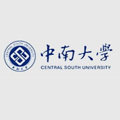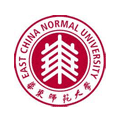Universities in China

Changsha University of Science & Technology
Changsha, China
Changsha University of Science & Technology (CUST) is located in Changsha, a historic and cultural city in Hunan province, central south of China. The university is one of the largest in China, and it is an engineering-centered multidisciplinary university integrating engineering, science, management, economics, liberal arts and law. The school is jointly established by the Central Government and Hunan Provincial Government, mainly under the administration of Hunan Province. Changsha University of Science & Technology consists of 17 schools and departments, which include 1 post-doctoral... See full description.

Central South University (CSU)
Changsha, China
Central South University (CSU) is a comprehensive and national key university based in Changsha, a historic and cultural city in Hunan province, China. CSU was founded in April 2000 through the merger of the three former individual institutions. The institution is among the 32 universities first acceded to the "211 Project". Central South University offers degrees in 10 fields of study; these are engineering, science, medicine, management, literature, law, economics, philosophy, education and history. There are 82 undergraduate programs, 282 master's programs and 142 doctoral programs... See full description.

Donghua University, ICES:International Cultural Exchange School
Shanghai, China
ICES is a subsidiary of Donghua University in Beijing, China, which promotes international switch over and harness international talents who are interested in the Chinese culture. The teaching at the school is student-focused with highly qualified teacher and management staff. The school has a Teaching & Research Building and an International Education Centre Building which includes classrooms fully equipped with multimedia facilities, libraries, rest rooms and study lounges. There is also a Muslim canteen, which serves Halal food to Muslims. CIP (Centre of International Program) was... See full description.

East China Normal University (ECNU)
Shanghai, China
East China Normal University started its operations in 1951 at Shanghai on the campus of Great China University. The university comprises of 18 schools and two colleges, 4 research facilities having more than 50 departments, offering over 60 undergraduate programs. ECNU is considered as a prestigious National Liberal Arts and Sciences Training & Research facilities in fields as History, Mathematics, Geography, Psychology, Physics and Chinese. Furthermore, the international department of Chinese language teaching is accredited by the Ministry of Education. ECNU holds pride in hosting the... See full description.

Fudan University
Shanghai, China
Formerly known as ‘Fudan Public School’, Fudan University was created in 1905. The institution is located in Shanghai, China. With over 3,000 students (more than 3,500 foreign students) and many highly qualified lecturers, researchers, professors and associate professors, the school is very confident in offering education at an optimum standard. Fundan University also offers bachelor’s, master’s, doctoral and post-doctoral degrees. The institution consists of over 25 schools and departments, some of which are the Medical College, the School of Pharmacy, the School of Information... See full description.

Fuzhou University
Fuzhou, China
Fuzhou University was created in 1958 in Fujian province, China. Ever since its creation the school has been growing progressively, establishing reliable collaborations with over 20 universities all around the world, including the UK and US. Fuzhou University is now seen to be a very important institution in China creating high educational, cultural and scientific standards in Fujian Province, with a primary goal of making the world a better and more technological and scientifically advanced place. Courses taught here mainly cover the fields of Economics Science, Engineering, Foreign... See full description.
Harbin Engineering University
Harbin, China
Harbin Engineering University is an advanced educational institution that started work since its foundation in 1953. The University claims to provide high quality education in specific areas of the shipping industry, ocean exploration and nuclear application. Harbin Engineering University is located close to the captivating Songhua River in Harbin, North China. It educates over 21,000 students studying in various departments, including Shipbuilding Engineering, Power and Energy Engineering, Civil Engineering, Automation, Computer Science and Technology, Mechanical Engineering just to... See full description.

Huaiyin Normal University
Huai'an, China
Huaiyin Normal University is located in Huai'an City, in an area noted for its picturesque landscape and its rich land and culture.

International Fashion Academy, IFA Shanghai
Shanghai, China
International Fashion Academy, better known as IFA Paris-Shanghai, offers students undergraduate and graduate programs in design, technique and business in an environment of multidisciplinary collaboration. With schools in Paris and Shanghai, IFA Paris is at the forefront of fashion education and offers programs that reflect the breadth of opportunity available in this vibrant industry.

Tsinghua University
Beijing, China
Tsinghua University is a research university located in Beijing, China, and one of the nine members of the C9 League, an alliance of nine universities in mainland China, which also includes Peking University, Harbin Institute of Technology, University of Science and Technology of China, Fudan University, Zhejiang University, Nanjing University, Shanghai Jiao Tong University and Xi'an Jiao Tong University.
The institution was originally established in 1911 under the name "Tsinghua Xuetang” and has been renamed several times since then: from "Tsinghua School,"... See full description.
Universities in China by City:
BeijingChangshaFuzhouHaikouHarbinHuai'anJinan cityNankai DistrictShanghaiAbout universities in China
In the past ten years, the higher education system in China has exploded, with an estimated 700 percent increase in total student enrollment during that timeframe. Today China has by far the largest system of higher education in the world, boasting nearly 30 million students divided between 2000 public universities and approximately 1000 private institutions.
The entire Chinese system of higher education is under the direct supervision of the Ministry of Education, which is responsible for all education-related policy making, legislation, planning, funding and evaluation. However, since the educational reforms that took place between the mid 1980s and early 1990s, more and more of that authority has been devolved to the local communities and the member institutions, giving them greater autonomy and freedom to make necessary changes and adaptations when needed. However, despite this newly found partial sovereignty, the President of each university still works directly under the leadership of the Committee of the Chinese Communist Party, rather than any local agency or institution.
Since the educational reforms of the 1980s and 1990s, higher education in China has been restructured to more closely resemble colleges and universities in other countries, such as the United States and Europe. This newly adapted 3-cyle system of education, which includes bachelor, masters and doctorate degree programs, has accounted for much of the enrollment boom in China over the last ten years. Of the almost 2000 public institutions of higher learning in China, more than 800 offer at least the first cycle bachelor degree in a number of different academic fields. Many of these also offer both Master’s and Doctorate-level programs, the latter of which is where the majority of scientific research in China is initiated and performed. The remaining public institutions offer 3-year associate degree programs, most of them geared towards vocational education in careers that directly benefit the community and nation as a whole.
Prior to the late 1980s and early 1990s, when enrollment numbers were but a fraction of what they are today, the universities in China did not charge students tuition for their education. This was largely because only the brightest academic students were permitted to attend these universities, and it was understood that graduates would more than pay for their education by the contributions they would ultimately make to China’s development. With reform, however, came greater access and increased demand, prompting the Chinese government to implement the “dual track system” in the latter years of the 1980s and early 1990s. Under this enrollment policy, students scoring below the cut-off line on the national college entrance exam would have to pay for their tuition, while the rest were educated free of cost. As you might imagine, this didn’t sit well with some people, so to avoid any future rifts, in 1997 the dual track system was completely abandoned, and now every student pays tuition fees.
Despite its slow start, the higher education system in China is rapidly becoming one of the best in the world. In fact, according to last year’s prestigious “World’s Best Universities” rankings, put out by the esteemed publication U.S. News and World Report, two Chinese universities, Peking University and Tsinghua University, are among the top 50 in the world, and another, Fudan University, cracked the top 100.
The entire Chinese system of higher education is under the direct supervision of the Ministry of Education, which is responsible for all education-related policy making, legislation, planning, funding and evaluation. However, since the educational reforms that took place between the mid 1980s and early 1990s, more and more of that authority has been devolved to the local communities and the member institutions, giving them greater autonomy and freedom to make necessary changes and adaptations when needed. However, despite this newly found partial sovereignty, the President of each university still works directly under the leadership of the Committee of the Chinese Communist Party, rather than any local agency or institution.
Since the educational reforms of the 1980s and 1990s, higher education in China has been restructured to more closely resemble colleges and universities in other countries, such as the United States and Europe. This newly adapted 3-cyle system of education, which includes bachelor, masters and doctorate degree programs, has accounted for much of the enrollment boom in China over the last ten years. Of the almost 2000 public institutions of higher learning in China, more than 800 offer at least the first cycle bachelor degree in a number of different academic fields. Many of these also offer both Master’s and Doctorate-level programs, the latter of which is where the majority of scientific research in China is initiated and performed. The remaining public institutions offer 3-year associate degree programs, most of them geared towards vocational education in careers that directly benefit the community and nation as a whole.
Prior to the late 1980s and early 1990s, when enrollment numbers were but a fraction of what they are today, the universities in China did not charge students tuition for their education. This was largely because only the brightest academic students were permitted to attend these universities, and it was understood that graduates would more than pay for their education by the contributions they would ultimately make to China’s development. With reform, however, came greater access and increased demand, prompting the Chinese government to implement the “dual track system” in the latter years of the 1980s and early 1990s. Under this enrollment policy, students scoring below the cut-off line on the national college entrance exam would have to pay for their tuition, while the rest were educated free of cost. As you might imagine, this didn’t sit well with some people, so to avoid any future rifts, in 1997 the dual track system was completely abandoned, and now every student pays tuition fees.
Despite its slow start, the higher education system in China is rapidly becoming one of the best in the world. In fact, according to last year’s prestigious “World’s Best Universities” rankings, put out by the esteemed publication U.S. News and World Report, two Chinese universities, Peking University and Tsinghua University, are among the top 50 in the world, and another, Fudan University, cracked the top 100.

